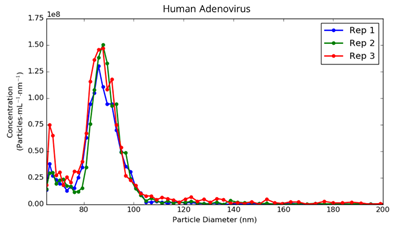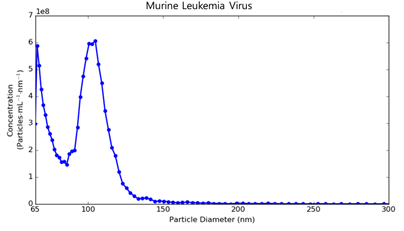

Measuring the viral titer, the concentration of viruses in a sample, is an important procedure in virology. The modern fast pace of research and the current race to develop a vaccine for the COVID-19 pandemic highlight the necessity for a rapid and easy methodology for virus quantification.
Conventional approaches to viral titer are time-consuming, labor intensive and often suffer from poor reproducibility. Plaque titer and fluorescence focus assay (FFA) techniques require serial dilutions of the virus stock and the waiting period for cell infection and incubation can last for days. Other methods such as quantitative polymer chain reaction (qPCR) and enzyme-linked immunosorbent assay (ELISA) can be completed in hours but qPCR is sensitive to contamination and ELISA is highly selective and necessitates the prior knowledge of specific antibody-antigen interaction. Transmission electron microscopy (TEM) quantification is expensive and requires tedious sample preparation and a highly skilled operator.
Spectradyne's microfluidic pulse sensing (MRPS) technology delivers a complete and accurate analysis within minutes and consumes less than 3 microliters of sample. The Spectradyne's nCS1TM system utilizes disposable microfluidic cartridges, eliminating cross-contamination between samples and allowing for rapid testing of high number of samples.
With non-optical electrical sensing technology, the nCS1TM can detect and quantify virus particles directly in complex biological samples, saving substantial amount of sample preparation time. The system is practical, highly automated and easy to use.
Comparison table of the time and labor cost of virus titer techniques:
| Technique | Method | Reproducibility | Time | Labor | Cost |
|---|---|---|---|---|---|
| MRPS (nCS1) | Viral particle | Excellent | Minutes | Low | Inexpensive |
| Plaque titer | Infectivity assay | Poor | Days | High | Inexpensive |
| FFA | Infectivity assay | Poor | Days | High | Expensive |
| qPCR | Viral nucleic acid | Excellent | Hours | Moderate | Expensive |
| ELISA | Viral protein | Good | Hours | Moderate | Inexpensive |
| TEM | Viral particle | Excellent | Weeks | High | Expensive |
Back to table of contents
Please continue to follow our blog as we share insights, technical details, and generally geek-out with you about nanoparticle science!
Email us for more information, or to discuss your particular application directly.

Human adenovirus sample characterized with Spectradyne's nCS1TM.

Human immunodeficiency virus (HIV, inactivated) characterized with Spectradyne's nCS1TM.

Murine leukemia virus sample characterized with Spectradyne's nCS1TM.